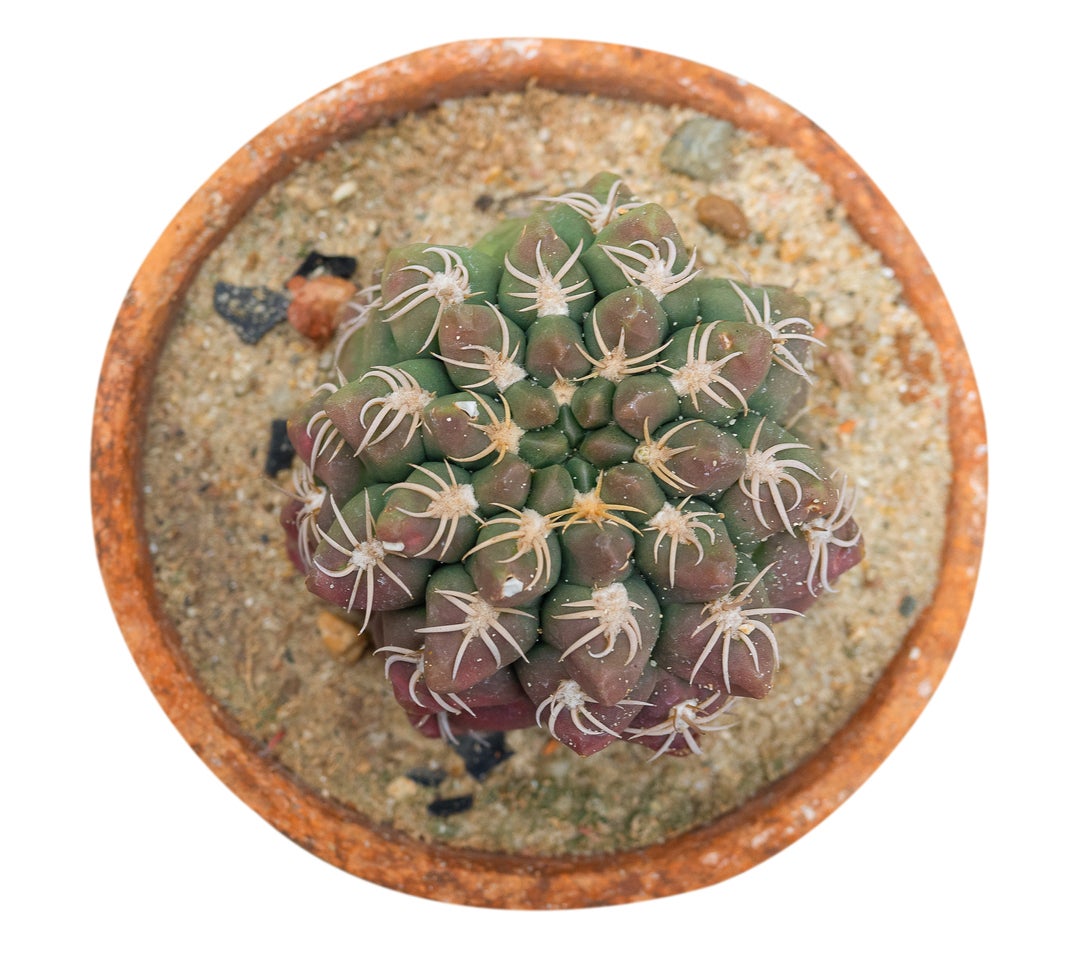What Is A Chin Cactus – Tips For Growing Chin Cacti


A succulent bowl with several different species makes an attractive and unusual display. Tiny chin cactus plants complement many types of succulents and are small enough they won't outcompete other diminutive specimens. What is a chin cactus? This succulent, in the Gymnocalycium genus, is comprised of smaller cacti, most of which produce lovely, colorful flowers.
Chin Cactus Information
Cactus collectors should have at least one chin cactus in their menagerie. Native to Argentina and certain other parts of SE South America, these varieties need some protection from searing sun and even do well in partial shade. They do have the same soil, water, and nutrient needs as their desert cousins. All in all, a very easy plant to grow with few specialized cultivation needs.
There are about 50 species of chin cactus, many of which are available as ornamental plants. One of the most common is a grafted variety sold as Lollipop or Moon cactus. They must be grafted because they lack chlorophyll. They are bright red or yellow and need a green rootstock to help them synthesize food.
Other species in the family are semi-flattened, greenish-gray globes with small, sharp spines growing from areoles that feature a chin-like protuberance. The genus name comes from the Greek "gymnos," meaning naked, and "kalyx," meaning bud.
Some species grow 7 inches (18 cm.) high and 12 inches (30.5 cm.) around, but the majority remain under 5 inches (12.5 cm.). This makes these diminutive cacti perfect for combination succulent dishes. The flowers are large for such small plants, around 1.5 inches (4 cm.) across, and come in red, pink, white, and salmon.
The blooms and stems do not have any spines or wool, which leads to the name "naked bud." The flowers are often followed by small green fruits dotted with spines. Chin cactus flower easily, but only in warm sites. The white spines on the main plant flatten out and hug the ribbed body.
Tips on Growing Chin Cacti
Like most cactus, chin cacti do not have a deep root system and can thrive in a shallow dish container. They are not winter-hardy and are best suited as houseplants unless you live in a hot region.
Gardening tips, videos, info and more delivered right to your inbox!
Sign up for the Gardening Know How newsletter today and receive a free copy of our e-book "How to Grow Delicious Tomatoes".
A bright, but filtered, light location is best for growing chin cacti.
Use well-draining, gritty cactus soil. Water when the soil dried out, usually once per week in summer. In winter, it is best to leave the plant dry.
Fertilizer is not usually necessary unless the plant is struggling. Use a good cactus food at the start of the growing season that has been diluted to half strength.
Cacti are one of the easiest plants to grow and rarely have problems. The most common is overwatering, which can cause root rot.

Bonnie Grant is a professional landscaper with a Certification in Urban Gardening. She has been gardening and writing for 15 years. A former professional chef, she has a passion for edible landscaping.
-
 5 Tough Urban Trees That Thrive In Cities – Top Picks For Urban & Suburban Landscapes
5 Tough Urban Trees That Thrive In Cities – Top Picks For Urban & Suburban LandscapesExplore the best urban trees that will add value to even the most challenging of landscapes. Get growing with these ideas and enjoy all the benefits of trees.
By Teo Spengler
-
 7 New & Improved Cultivars Of Old-Fashioned Plants – These Aren’t Your Grandma’s Plants!
7 New & Improved Cultivars Of Old-Fashioned Plants – These Aren’t Your Grandma’s Plants!Old is new again! These old-fashioned plants have new cultivars that are sure to thrive in your garden and bring the charm factor. Neighbors will be envious!
By Mary Ellen Ellis